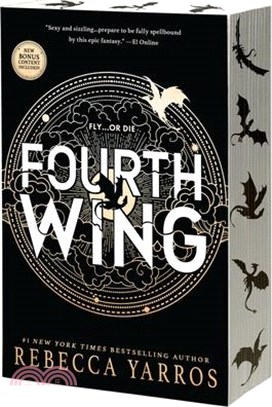The Great Herbal of Leonhart Fuchs ─ De Historia Stirpium Commentarii Insignes, 1542
商品資訊
ISBN13:9780804738033
出版社:Stanford Univ Pr
作者:Frederick G. Meyer; Emily W. Emmart Trueblood; John Lewis Heller; Leonhart Fuchs
出版日:1999/10/01
裝訂/頁數:精裝/1864頁
規格:33cm*24.1cm*12.7cm (高/寬/厚)
定價
:NT$ 21600 元若需訂購本書,請電洽客服 02-25006600[分機130、131]。
商品簡介
相關商品
商品簡介
Leonhart Fuchs's herbal—recognized for more than four centuries as a masterpiece of Renaissance botany and one of the most beautiful books ever printed—now appears for the first time in a facsimile edition, accompanied by a volume of commentary based on three decades of historical and botanical research; the two volumes are published as a handsome boxed set. Only some 150 copies of the herbal are known to survive in rare book collections, and in the antiquarian book market it commands high prices (a copy was sold at Christie's for $17,000 in 1997).
The herbal, a compilation of information on the medicinal properties of plants, had declined in the Middle Ages. This changed in the early sixteenth century with the emergence in Germany of the new form of a printed, illustrated herbal, led by De historia stirpium commentarii insignes by Leonhart Fuchs (1501-1566). The plan and organization of the herbal was entirely original with Fuchs, although the work included a vast amount of material derived from his Classical predecessors.
Fuchs's book is of great splendor, without equal among sixteenth-century herbals. It is illustrated with 511 woodcut figures, all original and depicted from life. These figures established a standard of botanical illustration that has lasted to the present day, and more than 100 species were illustrated for the first time (including 12 New World plants such as maize, kidney bean, chili pepper, cactus, and tobacco). During Fuchs' lifetime, the herbal and its various abridgements went through 39 printings in Latin, German, French, Spanish, and Dutch. The original Latin edition of 1542 is here reprinted in a facsimile only slightly smaller than the original, as the second volume of this set.
The exhaustively detailed commentary will become the standard reference work for Renaissance botany. Of invaluable interest to historians of medicine, pharmacology, philology, art, and printing, it will also appeal to collectors of fine and rare books, gardeners, and proponents of alternative medicine. The commentary contains some 150 illustrations, 100 in color, that include contemporary hand-colored figures from printed copies of the herbal and woodcuts hand-colored under Fuchs' supervision for a projected, unpublished elaboration of the original herbal.
Book References to Fuchs's Herbal
"A folio of breathtaking splendor."
—The Illustrated Herbal
"A botanical masterpiece."
—Herbals: Their Origin and Evolution
"Perhaps the most celebrated and beautiful herbal ever published."
—Printing and the Mind of Man
"Fuchs' woodcuts set a standard for botanical illustration that holds up to this day for clarity and directness."
—The Renaissance Print
"One of the greatest of all herbals."
—100 Books Famous in Medicine
The herbal, a compilation of information on the medicinal properties of plants, had declined in the Middle Ages. This changed in the early sixteenth century with the emergence in Germany of the new form of a printed, illustrated herbal, led by De historia stirpium commentarii insignes by Leonhart Fuchs (1501-1566). The plan and organization of the herbal was entirely original with Fuchs, although the work included a vast amount of material derived from his Classical predecessors.
Fuchs's book is of great splendor, without equal among sixteenth-century herbals. It is illustrated with 511 woodcut figures, all original and depicted from life. These figures established a standard of botanical illustration that has lasted to the present day, and more than 100 species were illustrated for the first time (including 12 New World plants such as maize, kidney bean, chili pepper, cactus, and tobacco). During Fuchs' lifetime, the herbal and its various abridgements went through 39 printings in Latin, German, French, Spanish, and Dutch. The original Latin edition of 1542 is here reprinted in a facsimile only slightly smaller than the original, as the second volume of this set.
The exhaustively detailed commentary will become the standard reference work for Renaissance botany. Of invaluable interest to historians of medicine, pharmacology, philology, art, and printing, it will also appeal to collectors of fine and rare books, gardeners, and proponents of alternative medicine. The commentary contains some 150 illustrations, 100 in color, that include contemporary hand-colored figures from printed copies of the herbal and woodcuts hand-colored under Fuchs' supervision for a projected, unpublished elaboration of the original herbal.
Book References to Fuchs's Herbal
"A folio of breathtaking splendor."
—The Illustrated Herbal
"A botanical masterpiece."
—Herbals: Their Origin and Evolution
"Perhaps the most celebrated and beautiful herbal ever published."
—Printing and the Mind of Man
"Fuchs' woodcuts set a standard for botanical illustration that holds up to this day for clarity and directness."
—The Renaissance Print
"One of the greatest of all herbals."
—100 Books Famous in Medicine
主題書展
更多
主題書展
更多書展今日66折
您曾經瀏覽過的商品
購物須知
外文書商品之書封,為出版社提供之樣本。實際出貨商品,以出版社所提供之現有版本為主。部份書籍,因出版社供應狀況特殊,匯率將依實際狀況做調整。
無庫存之商品,在您完成訂單程序之後,將以空運的方式為你下單調貨。為了縮短等待的時間,建議您將外文書與其他商品分開下單,以獲得最快的取貨速度,平均調貨時間為1~2個月。
為了保護您的權益,「三民網路書店」提供會員七日商品鑑賞期(收到商品為起始日)。
若要辦理退貨,請在商品鑑賞期內寄回,且商品必須是全新狀態與完整包裝(商品、附件、發票、隨貨贈品等)否則恕不接受退貨。
























